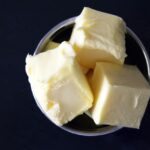
Why the East Coast Has Long and Skinny Butter But Not the West Coast
January 31, 2022
How to Really Understand the CPI
February 2, 2022A Nevada judge might be doing some tasty research.
To settle a dispute between Chop Shop and Cafe Rio (and also their landlord), he has to decide if Chop Shop’s menu offers Mexican food. If yes, and it represents more than 10 percent of the shop’s sales, then the lease in their small mall prohibits it. Saying the food is Mexican, Cafe Rio decreased its rent. As you might guess, the landlord wants the money.
It can be tough deciding what a food name means.
Deciding What a Food Name Means
In the Nevada case, food experts suggest the ingredients might help the judge decide if a dish can be called Mexican. The Chop Shop pointed out that neither its Santa Fe Chop nor its Viva Mexico Chop had a flour tortilla base. Also, because the Viva Mexico Chop contains cheddar cheese, a cheese not used in Mexican food, maybe it’s not Mexican. Another food expert just added that he wished they tasted better.
Somewhat similarly, a Virginia judge had to decide what gruyère is. This case started as a trademark application for gruyère. Asked to describe gruyère, its producers said it’s a mild, smooth, and nutty cheese that is made in the region surrounding Gruyères, Switzerland. Its spring should be average, its crumble, low, and it should come in a wheel that weighs between 55 and 88 pounds. Completing the description, the NY Times said it needs dominant fruity notes.
According to a Virginia judge, that was not good enough.
The European makers of gruyère applied for a U.S. trademark that would give them the exclusive use of the name in the U.S.. They said the U.S. cheeses that call themselves gruyère are a poor imitation of the real thing. According to the Europeans, one U.S. supermarket was even engaging in false advertising when it called a German cheese, gruyère. Instead, it was a “German Alpine-style cheese.”
The judge decided that gruyère is a generic name, too broad to deserve a trademark.
Our Bottom Line: Product Differentiation
As a sandwich shop or a cheese maker, you care about competition and the ability to differentiate what you sell. As participants in monopolistically competitive markets, you face many other establishments that could be just like you. One way to attract a clientele is offering something no one else has…
Like Mexican food or gruyère cheese.
My sources and more: Thanks to my student Abby and husband Cary for discovering two seemingly different articles that wound up becoming today’s post. The first was on gruyère and the second, Mexican food. (Our featured image is from the NY Times.)
![econlifelogotrademarkedwebsitelogo[1]](/wp-content/uploads/2024/05/econlifelogotrademarkedwebsitelogo1.png#100878)




